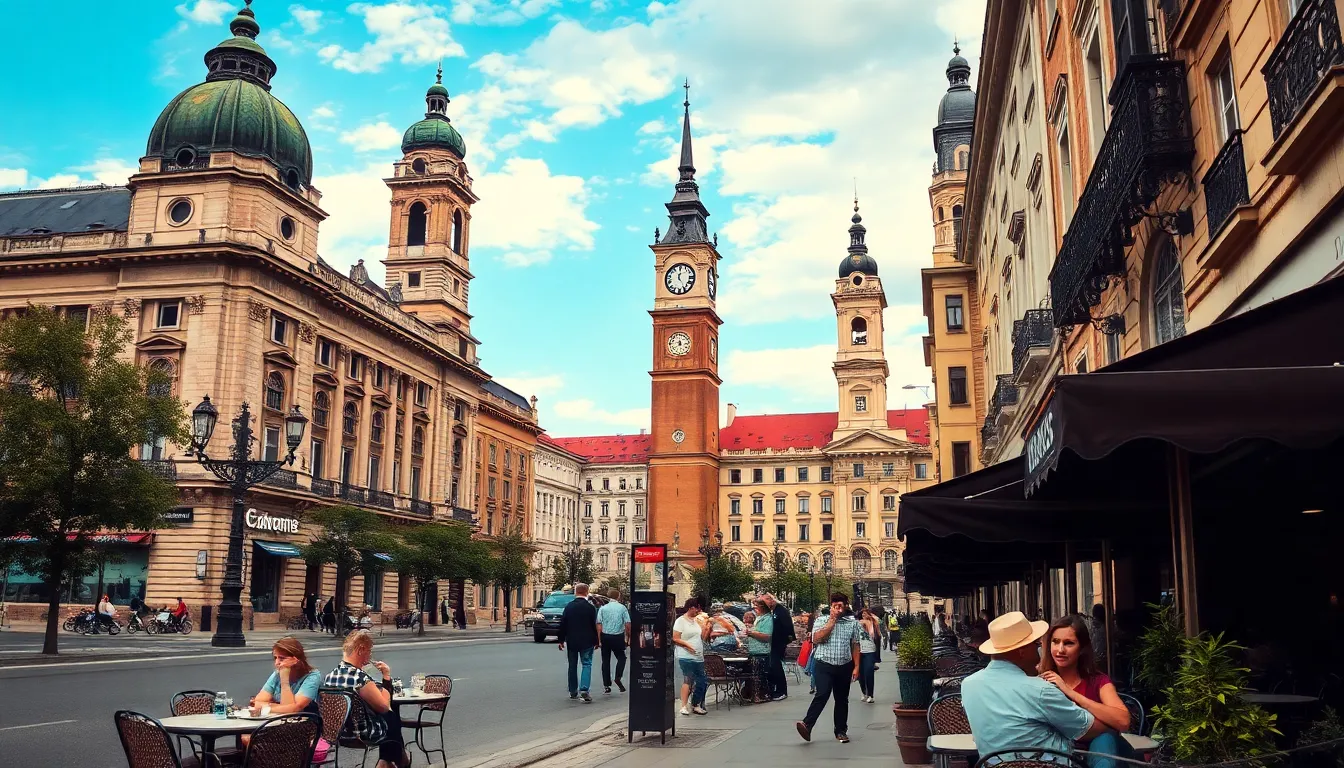Ever found yourself wondering what time it is in Romania while planning that dream vacation or trying to catch up with a friend? Well, you’re not alone. Time zones can be trickier than finding a needle in a haystack, especially when you’re juggling schedules across continents. But fear not! Romania’s clock ticks to a unique rhythm that’s worth understanding.
Table of Contents
ToggleUnderstanding Time Zones
Navigating time zones is crucial for effective communication and planning. Romania’s time zone and daylight saving practices play significant roles in this process.
Time Zone of Romania
Romania operates on Eastern European Time (EET), which is UTC+2. During winter months, this standard applies. In contrast, Eastern European Summer Time (EEST), at UTC+3, is used in the summer. These adjustments ensure better alignment with daylight hours. Romania’s geographical location influences its time zone decisions. Both business and personal interactions can depend on this understanding, making awareness essential.
Daylight Saving Time Considerations
Daylight saving time in Romania begins on the last Sunday in March. Clocks move forward one hour at 3 a.m. and return on the last Sunday in October. During this period, the country shifts from EET to EEST. This transition affects travel and scheduling, especially for international coordination. Consistent awareness of these changes reduces confusion, particularly when connecting with others in different time zones. Accurate timekeeping fosters smoother interactions amid varying schedules.
Current Time in Major Cities

Understanding the current time in Romania’s major cities helps coordinate activities and interactions effectively.
Bucharest
Bucharest represents Romania’s capital and largest city. The current local time is consistent with Eastern European Time, UTC+2 during winter months. In summer, the city observes Eastern European Summer Time, UTC+3. When it comes to daylight saving time, the clock shifts forward on the last Sunday in March and reverts on the last Sunday in October. Knowing this allows for accurate scheduling of meetings or travel plans.
Cluj-Napoca
Cluj-Napoca, a significant city in Transylvania, shares the same time zone as Bucharest. Local time mirrors Eastern European Time with the UTC+2 offset in winter. Summer months reflect a shift to UTC+3 due to daylight saving practices. This synchronization aids residents and visitors in managing their activities around the clock changes effectively, especially during the tourist season.
Timișoara
Timișoara serves as an important cultural hub in western Romania. Its time zone aligns with the national standard, following Eastern European Time, which operates at UTC+2 in winter. During the summer, Timișoara transitions to UTC+3, adhering to daylight saving time. Keeping track of this changes assists locals and travelers in maintaining their schedules without confusion.
Tools to Check Time
Various tools help confirm the current time in Romania, enhancing scheduling accuracy and coordination. Utilizing them ensures clarity amidst time zone differences.
Online Time Converters
Online time converters provide instant access to Romania’s current time. Websites like timeanddate.com and worldclock.com are popular choices for travelers and remote workers. These platforms enable users to enter their location and receive real-time conversion. Options exist for converting multiple time zones simultaneously, perfect for coordinating with friends or colleagues in Romania. Many converters also include daylight saving adjustments, ensuring accurate calculations and avoiding confusion.
Mobile Applications
Mobile applications streamline time-checking directly from smartphones. Apps such as Time Zone Converter and World Clock offer easy access to Romania’s local time. Users receive alerts for daylight saving transitions, keeping them informed on time shifts. Features often include customizable widgets for quick viewing. These applications cater to frequent travelers, making it simple to stay on schedule whether in Romania or abroad. Each app provides additional tools, like calendar integrations and reminders, enhancing their utility.
Impact of Time on Travel and Business
Understanding time differences significantly impacts travel plans and business operations. Romania’s adherence to EET and EEST affects scheduling and coordination.
Best Practices for Scheduling
Capacity to manage time differences plays a vital role for travelers and businesses. Utilize online tools to verify the current time before making appointments. Setting reminders for daylight saving transitions ensures punctuality. Designate specific time slots that account for potential delays due to time zone changes. Communicate time using both local time and UTC to avoid confusion. This practice enhances clarity, especially when dealing with international clients or partners.
Effects on Communication
Effective communication relies on an accurate understanding of time differences. Misunderstandings arise when schedules overlap across time zones. Clarity in communication can prevent missed calls or late email responses. Regularly check time zones when planning meetings to accommodate all parties involved. Utilizing tools that display multiple time zones promotes seamless interaction for teams spread across various regions. This awareness fosters collaboration and ensures timely communication, critical for successful business relationships.
Understanding Romania’s time zone is essential for anyone looking to travel or communicate effectively with those in the country. With its adherence to Eastern European Time and daylight saving practices, keeping track of time can be tricky. Utilizing online tools and mobile applications can make this process easier and help avoid scheduling conflicts.
Whether in Bucharest, Cluj-Napoca, or Timișoara, awareness of local time is crucial for smooth interactions. By staying informed about time changes and using available resources, individuals can navigate Romania’s time zone with confidence, ensuring their plans run seamlessly.



